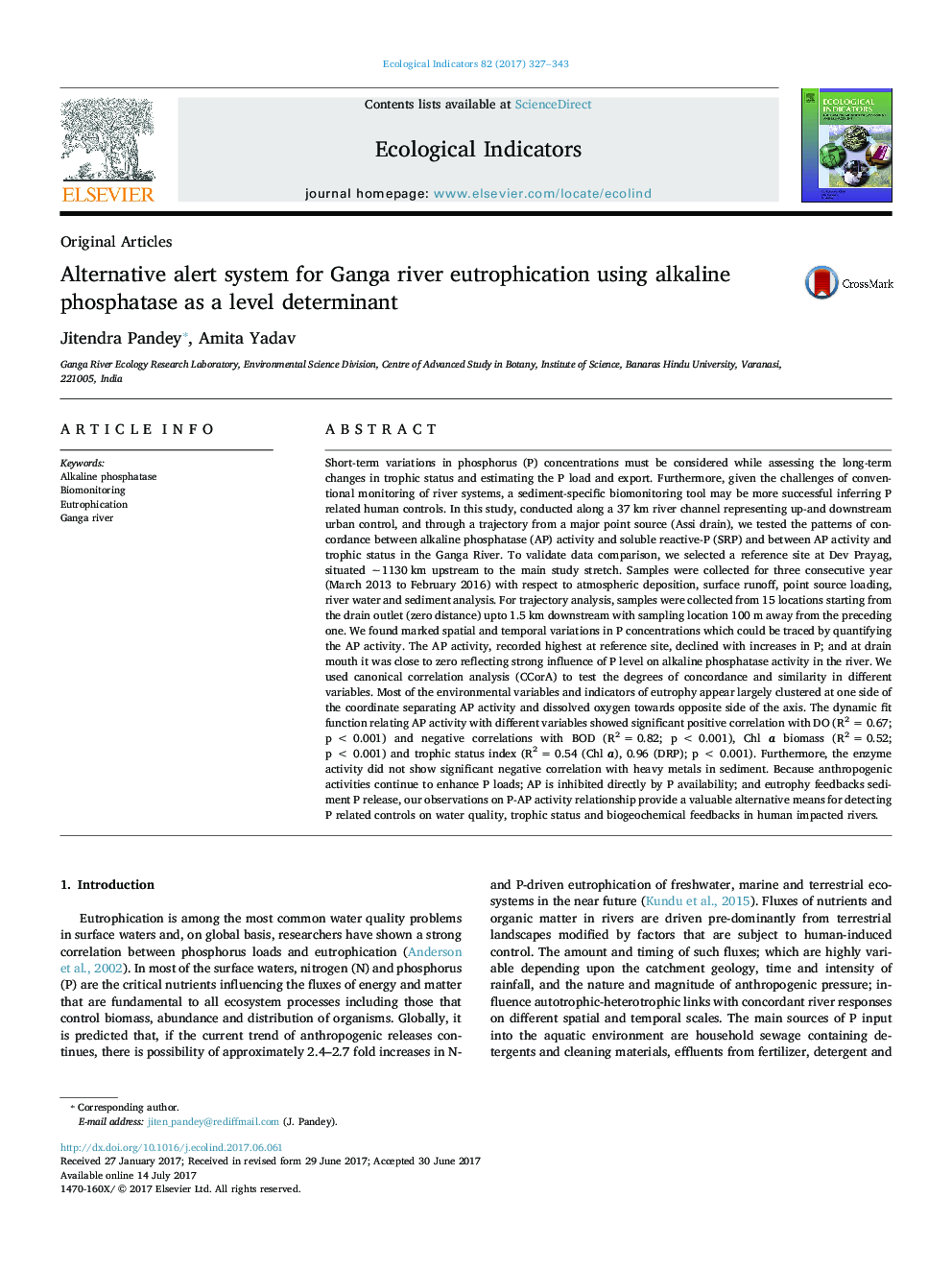| Article ID | Journal | Published Year | Pages | File Type |
|---|---|---|---|---|
| 5741334 | Ecological Indicators | 2017 | 17 Pages |
â¢The Ganga River receives large input of phosphorus from different sources.â¢We tested concordance between alkaline phosphatase (AP) and SRP in the Ganga River.â¢The CCorA segregated AP and dissolved oxygen opposite to the variables of eutrophy.â¢Study identifies AP as important predictor of P pollution and river eutrophy.
Short-term variations in phosphorus (P) concentrations must be considered while assessing the long-term changes in trophic status and estimating the P load and export. Furthermore, given the challenges of conventional monitoring of river systems, a sediment-specific biomonitoring tool may be more successful inferring P related human controls. In this study, conducted along a 37 km river channel representing up-and downstream urban control, and through a trajectory from a major point source (Assi drain), we tested the patterns of concordance between alkaline phosphatase (AP) activity and soluble reactive-P (SRP) and between AP activity and trophic status in the Ganga River. To validate data comparison, we selected a reference site at Dev Prayag, situated â¼1130 km upstream to the main study stretch. Samples were collected for three consecutive year (March 2013 to February 2016) with respect to atmospheric deposition, surface runoff, point source loading, river water and sediment analysis. For trajectory analysis, samples were collected from 15 locations starting from the drain outlet (zero distance) upto 1.5 km downstream with sampling location 100 m away from the preceding one. We found marked spatial and temporal variations in P concentrations which could be traced by quantifying the AP activity. The AP activity, recorded highest at reference site, declined with increases in P; and at drain mouth it was close to zero reflecting strong influence of P level on alkaline phosphatase activity in the river. We used canonical correlation analysis (CCorA) to test the degrees of concordance and similarity in different variables. Most of the environmental variables and indicators of eutrophy appear largely clustered at one side of the coordinate separating AP activity and dissolved oxygen towards opposite side of the axis. The dynamic fit function relating AP activity with different variables showed significant positive correlation with DO (R2 = 0.67; p < 0.001) and negative correlations with BOD (R2 = 0.82; p < 0.001), Chl a biomass (R2 = 0.52; p < 0.001) and trophic status index (R2 = 0.54 (Chl a), 0.96 (DRP); p < 0.001). Furthermore, the enzyme activity did not show significant negative correlation with heavy metals in sediment. Because anthropogenic activities continue to enhance P loads; AP is inhibited directly by P availability; and eutrophy feedbacks sediment P release, our observations on P-AP activity relationship provide a valuable alternative means for detecting P related controls on water quality, trophic status and biogeochemical feedbacks in human impacted rivers.
